Your cart is currently empty!
Dior’s Fluffy Love for the Chinese Ronghua

Almost like a half-hearted apology for the Chinese Mamian skirt theft in Dior’s design earlier on, Dior’s 2024 Summer male wear featured the velvet silk flowers (ronghua) which supposedly date to the 8th century China (supposedly because I’ve yet to find concrete proof of that claim, it is likely a mistaken identity with another silk flower which I will talk about another time).
But it is 2023/4, and the China (crafts)man doesn’t have a name, still.
Crowning glories.
— Dior (@Dior) June 25, 2023
Unmissable and colorful hats topped models at the #DiorSummer24 show by Kim Jones, a collaboration between @SJMillinery and artist Cécile Feilchenfeldt accessorized with handmade ronghua velvet flowers. Get a closer look next.
In all of Dior’s social media platform that I’ve access to so far, Twitter, Instagram, Youtube, and even their Wechat official account (you’d think they’d feature him properly on the Chinese-facing site), this master craftsman (Mr Zhao Shu Xian) is anonymous.

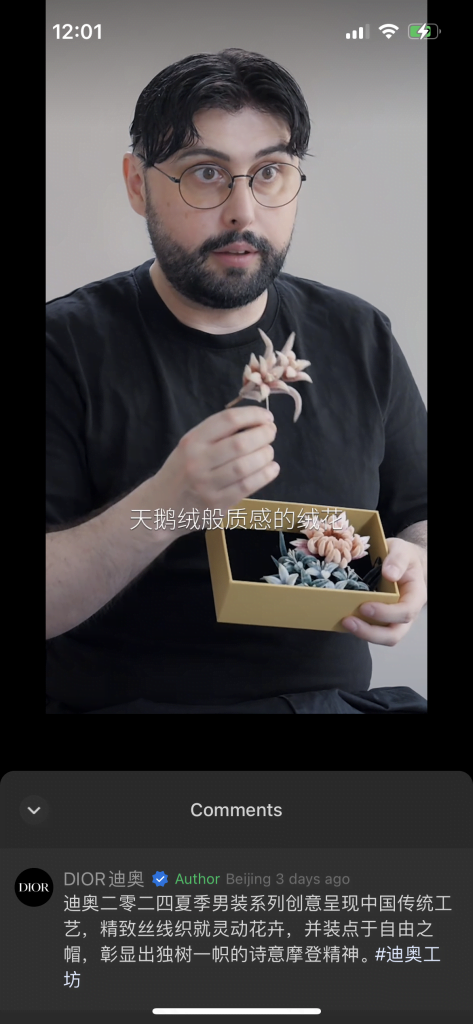
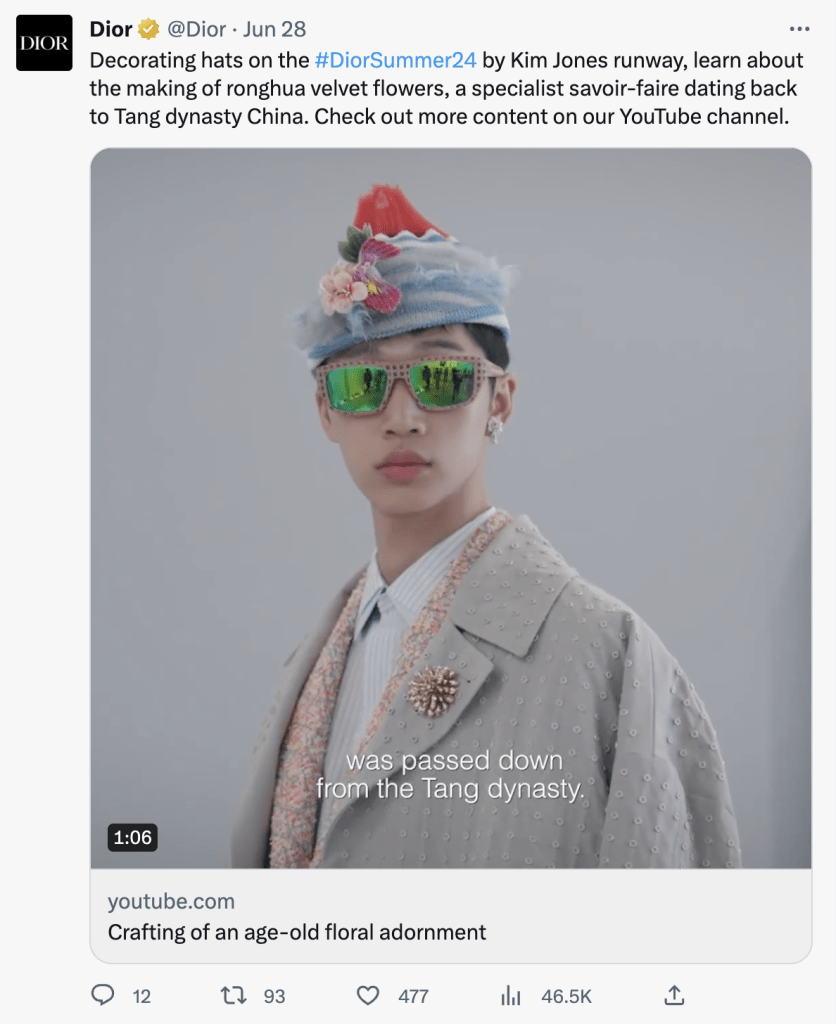
They’ve named everyone involved such as the two hatmakers and the Dior design head, but conveniently missed out on the Ronghua master craftsman’s name. Which is really peculiar as if he is not worthy of being mentioned despite being a key part of their feature.
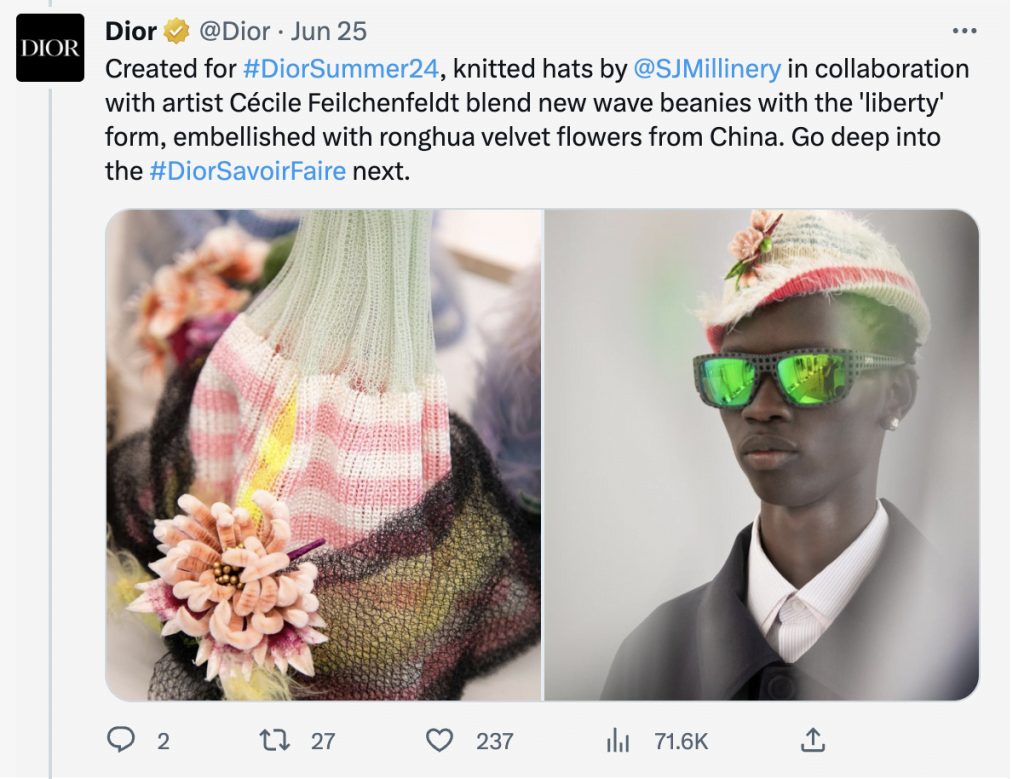
In addition, Dior also made some pretty baseless claims such as the ‘originality’ of their use of pastel colours against the typically intense/saturated colours of traditional Ronghua.

I don’t see how this is claim is respecting the authenticity and origins of the craft when we have plenty of examples of Ronghua being in pastel shades dating to over a century ago, owned by the Palace Museum of Beijing (this collection would’ve belonged to the Manchurian-Chinese imperial family of the last centuries).
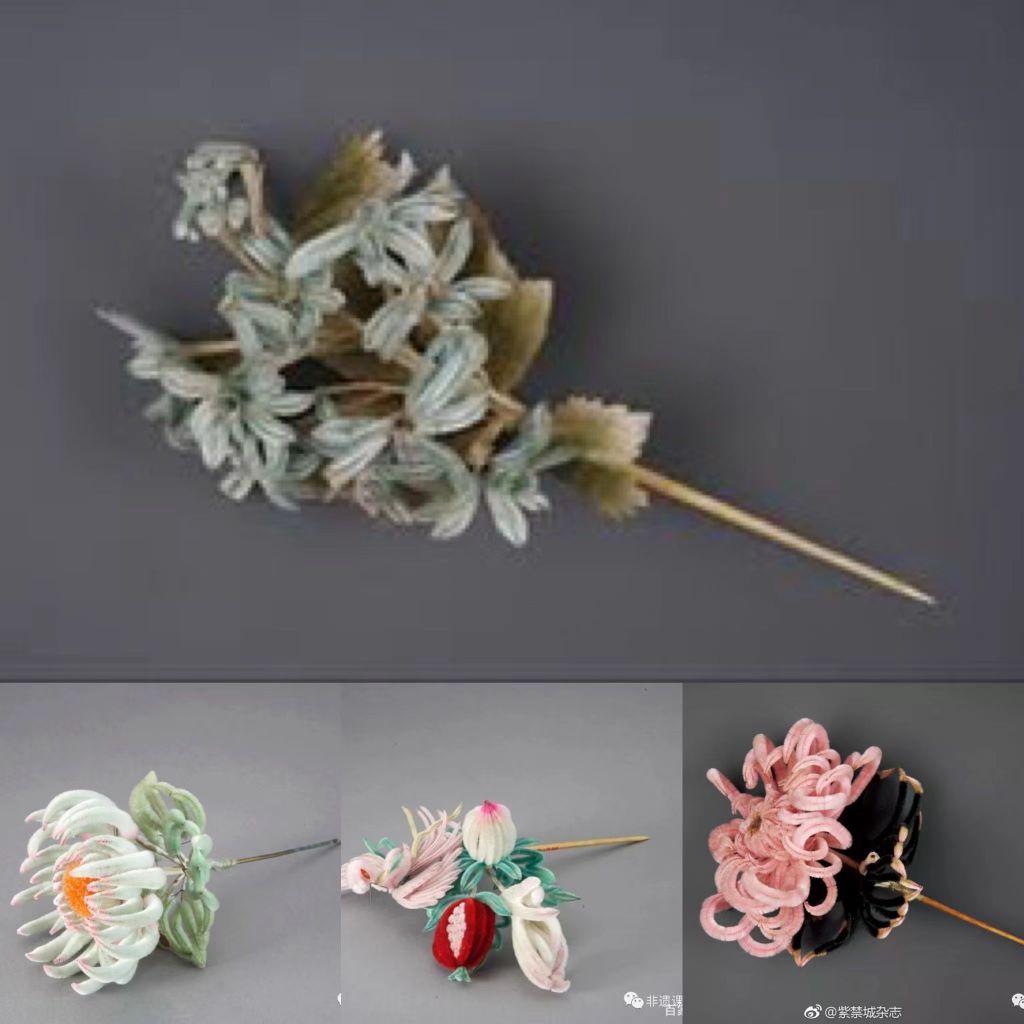
ABOUT RONGHUA
The Velvet Silk Flower used to be identified as having a history of about a hundred years. However, in recent years, somehow its origin has been popularly reported as going as far as some 1,200 years back. This claim, however, is rather unsupported by artefacts and records.
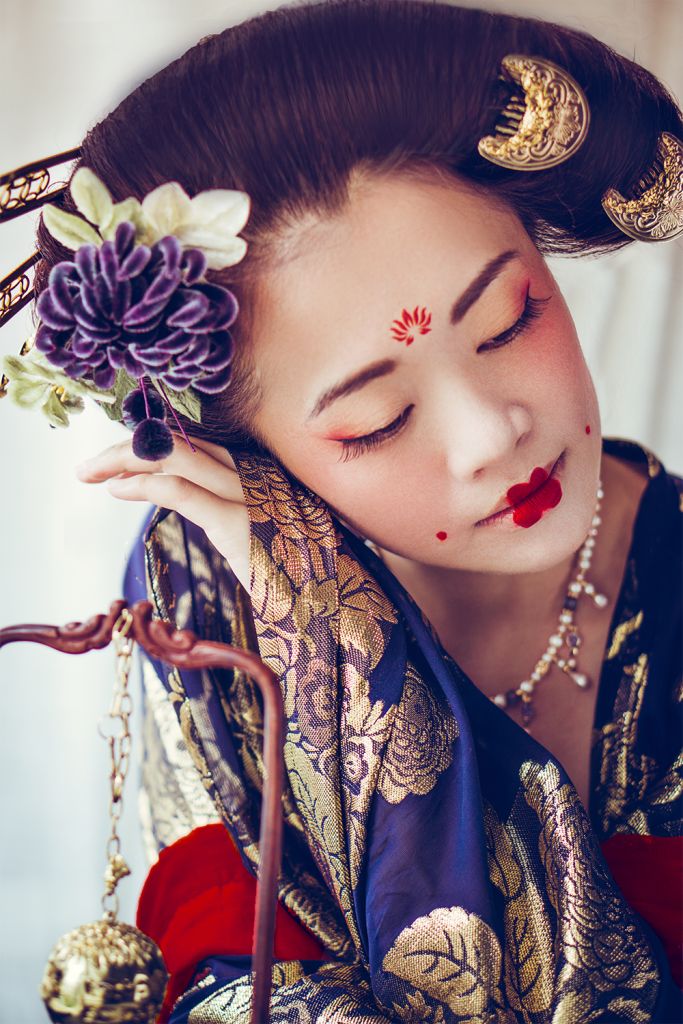
And the truth is likely to be somewhere in between, around 400-500 years ago somewhere in the Ming dynasty.
The only silk flower dating to as far back as 1,200 years ago is actually this extremely intricately made, silk fabric flower unearthed from Xinjiang astana tomb:
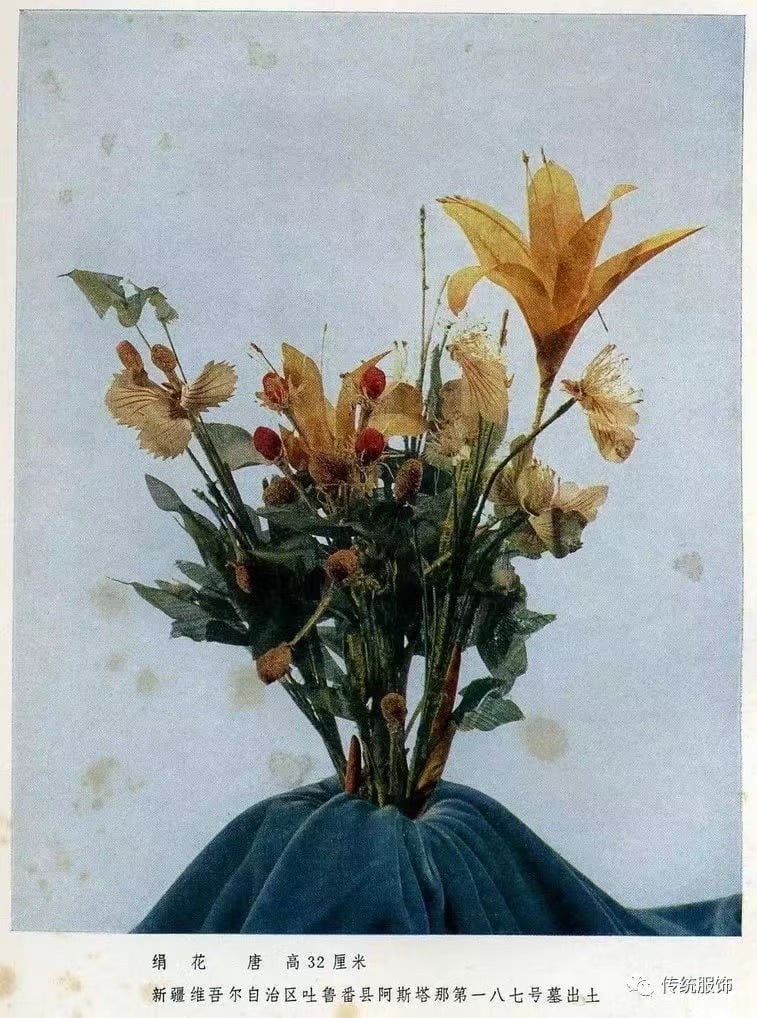
DIVERSITY OF THE RONGHUA CRAFT
The Ronghua velvet silk flower craft is considered an intangible cultural heritage (ICH) craft specific to the Beijing City, and to the Jiangsu Province. Both of which are not considered national level intangible cultural heritage unlike the silk cloth flower craft above.
Within the Ronghua craft in China today, there is the Northern style (ICH of the Beijing City), and the Southern style (ICH of the Jiangsu Province). The technical term for the Northern craft is “Beijing Velvet Flower and Velvet Birds craft”, which originated from a velvet flower factory in the 60s in Beijing.
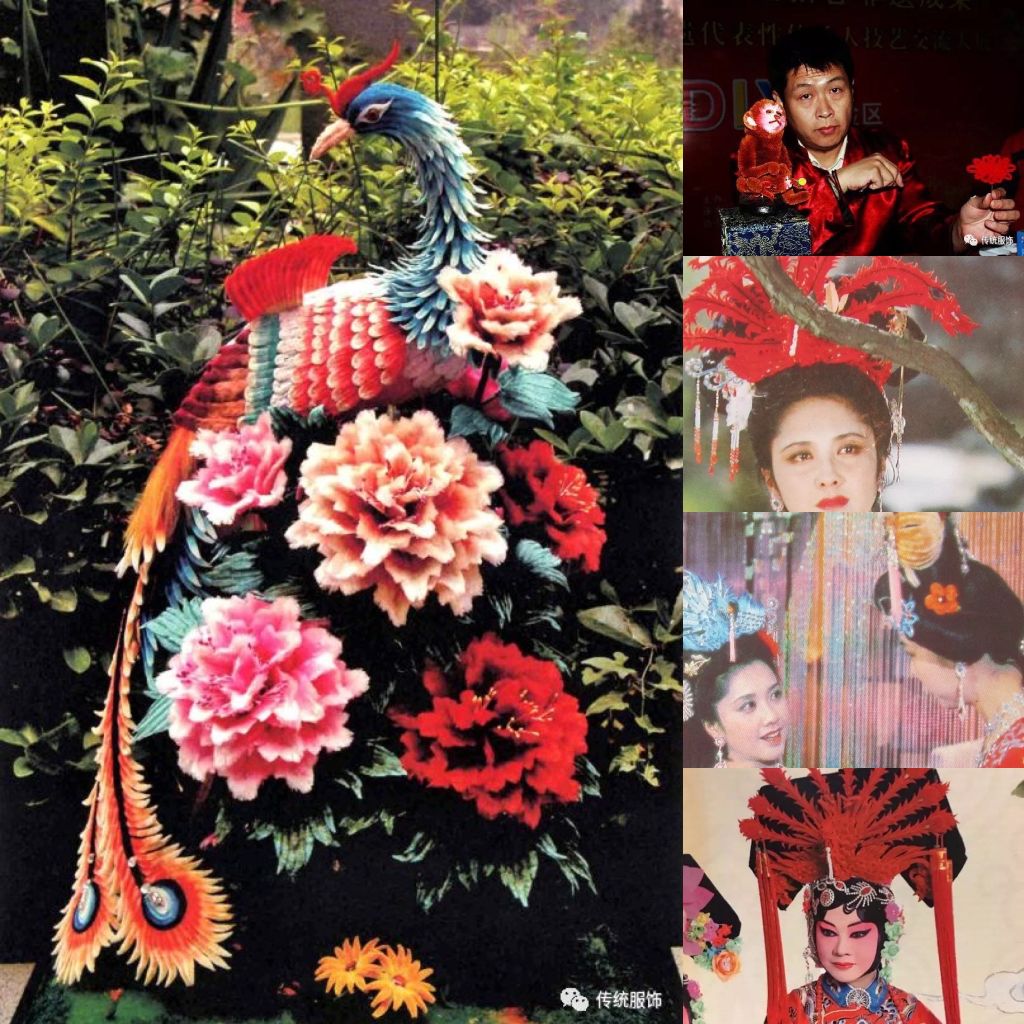
Based on the name, you might think that it only made birds and flowers, but they also made all kinds of cute animals to be sold to the overseas market for Halloween and Christmas. I remember buying small chicks and animals of velvet when I was younger too!
The Northern style is a lot more bold, dramatic, and less intricate as compared to the Southern style. While it might seem that the ‘Traditional’ style would be such saturated colours, it is mostly because of the market demand and use (a lot of times in Chinese opera performances), and for decorative purposes.
If you recall those beautiful velvet silk flower accessories in Yanxi Palace, they would’ve been made by the master craftsman from the Southern style although some of the designs were from the North (collection of the Palace Museum in Beijing, in the north).
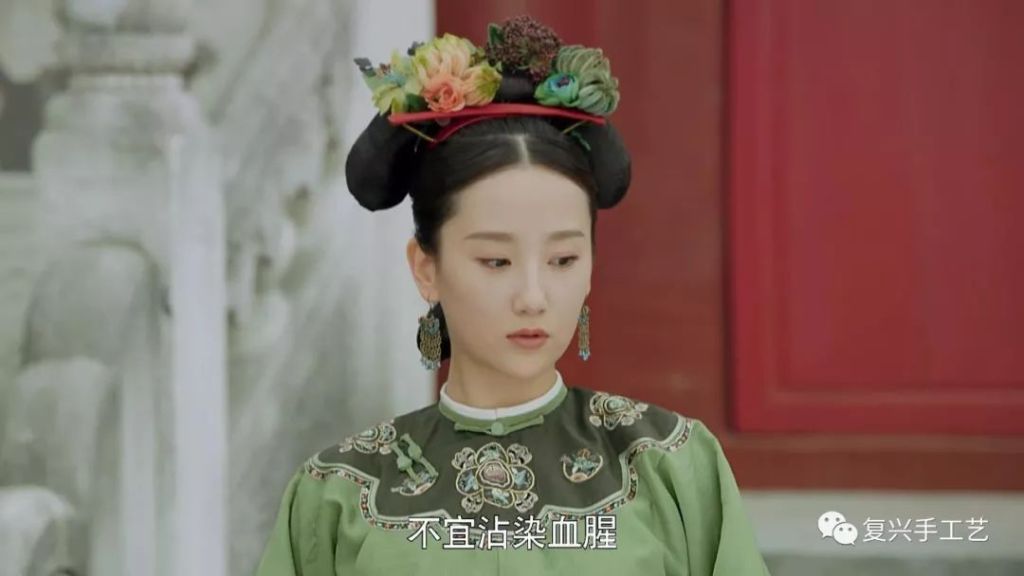
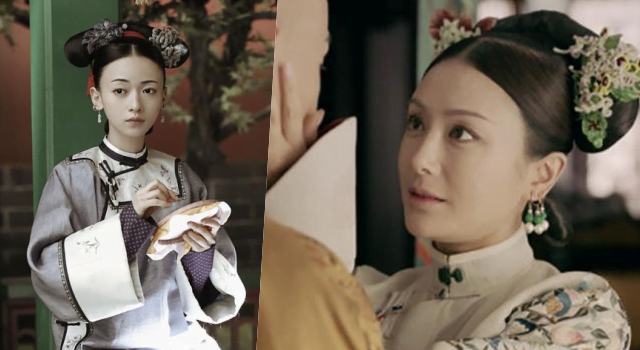
Whatever is the reason behind Dior’s deliberate disregard for the name of the craftsman Mr Zhao, I’m glad that it triggered me to write about it (or my lazy ass will never get moving).
I’ve a tonne of flowers from Mr Zhao’s workshop (and other craftsmen of similar style), and his waitlist can be up to a year or more, or if you are not particular, then it would be whatever is readily made available for purchase. The biggest issue with these traditional crafts is sustainability and scalability. Handmade items are hardly scalable due to the manual effort needed to make them, and the practice time you need to reach a certain level of proficiency.
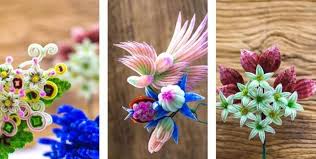
A lot of Chinese crafts are extremely frivolous, impractical, but takes a long time to make. And it is only after you have seen them in real life, or even touch it, that you would realise that it is so different from the pipe cleaners you’re thinking of:

Sure, they aren’t rocket science to make, it just takes hell of a time and practice to get to that level of intricacy. Thus incompatible with modern lifestyle where people are highly stimulated all the time and do not have the patience to sit down for days to make something. And why bother making something so fine if people generally lack the observational skill and finesse to appreciate it?

If you’re interested in craftsmanship and velvet flower and Yanxi palace, you might be interested in these articles:
The economies of authenticity: Yanxi vs Ruyi
Qing dynasty show styling–The good, the bad and the ugly (Make-up & Accessories episode)

Leave a Reply